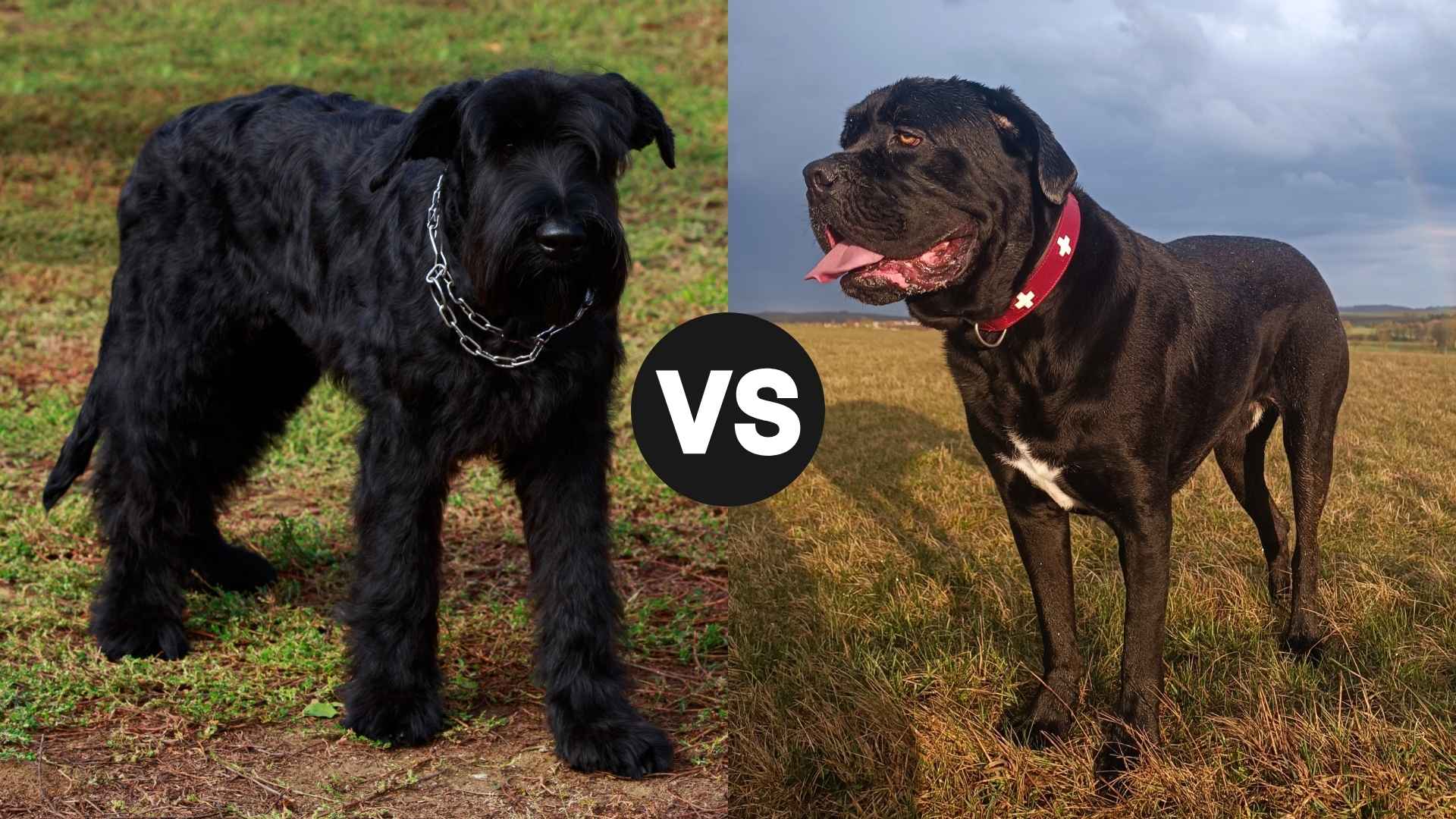When comparing two commanding and powerful breeds like the Giant Schnauzer vs Cane Corso, you’re looking at two giants of the canine world—both physically and in personality. Known for their intelligence, strength, and loyalty, these breeds have carved a niche as top-tier working dogs and loyal companions.
While the Giant Schnauzer boasts a wiry coat and sharp, alert demeanor, the Cane Corso exudes a more muscular, imposing presence with a calm and confident attitude. Both are natural protectors and thrive in environments where they have purpose and leadership.
Interestingly, when these two breeds are combined, their mix inherits an impressive blend of traits: size, loyalty, and protective instincts.
However, before considering a mix or choosing between them, it’s essential to understand the core differences and similarities in their temperament, training needs, and lifestyle suitability. In this guide, we’ll explore everything you need to know about the Giant Schnauzer vs Cane Corso.
Giant Schnauzer vs. Cane Corso
The Giant Schnauzer and Cane Corso are both large, powerful breeds with rich histories rooted in protection and utility. Developed in Germany, the Giant Schnauzer originated from the Standard Schnauzer and was enhanced with Rottweiler, Great Dane, and sheepdog bloodlines to create a rugged, intelligent cattle drover.
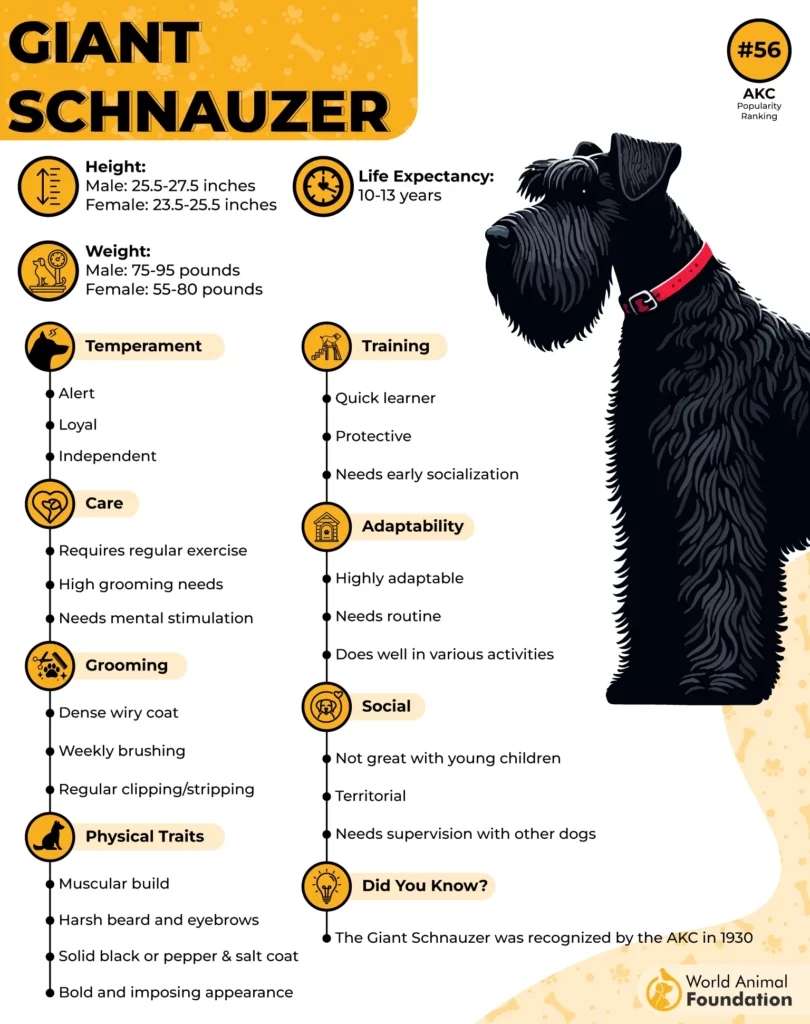
Over time, as the need for cattle dogs declined, the breed transitioned into urban roles such as police work and guarding. As the largest of the Schnauzer trio, the Giant Schnauzer is known for its stamina, courage, and sharp mind, making it an excellent working and companion dog.
As noted by Britannica, the Cane Corso hails from Italy and descends from the ancient Molossian war dogs of Rome. Originally bred for guarding farms, hunting large game, and even participating in warfare, the Cane Corso’s name reflects its protective instincts.
With a powerful build and calm, confident demeanor, this breed nearly vanished during the world wars but was revived in the 1970s and officially recognized by the AKC in 2010.
Size and Weight Differences: Cane Corso vs. Giant Schnauzer
When it comes to size and weight, both the Giant Schnauzer and Cane Corso are undeniably large, but the Cane Corso holds the edge in overall mass. Giant Schnauzers typically stand between 23.5 to 28.5 inches tall at the shoulder and can weigh up to 85 pounds, making them significantly larger than their Miniature counterparts by up to 65 pounds. Their sturdy, athletic build reflects their working dog heritage, offering both strength and agility.
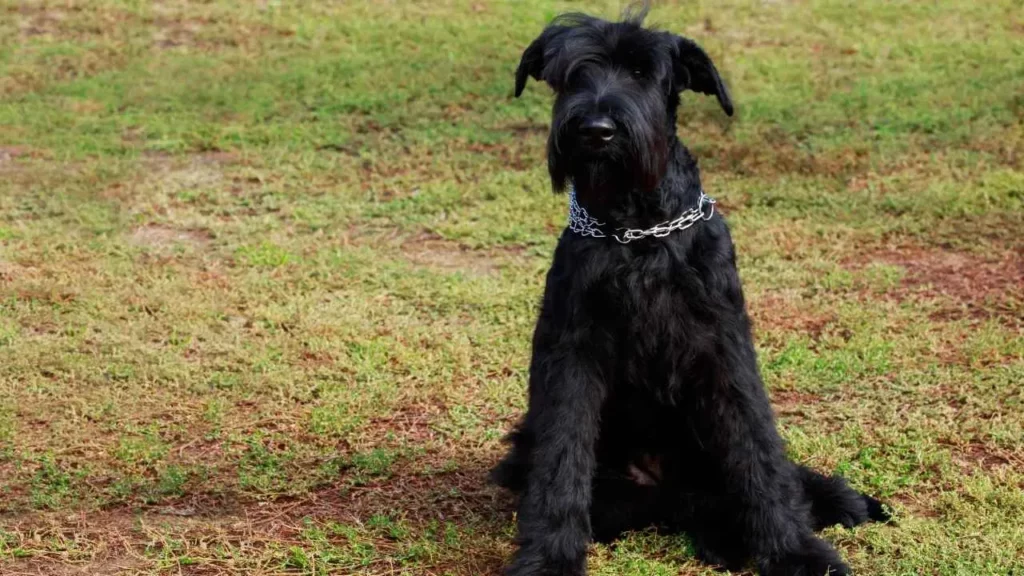
The Cane Corso, however, is even more imposing. These Italian guardians can reach up to 28 inches in height and frequently tip the scales at over 100 pounds. With their broad chests, muscular frames, and large, expressive heads, Cani Corsi projects a more robust and intimidating presence. While both breeds are powerful, the Cane Corso generally outweighs and out-bulks the Giant Schnauzer, making it the more massive of the two.
Temperament and Personality Traits Comparison
The Giant Schnauzer is an intelligent, high-energy dog that thrives on human companionship. Playful and alert, they are affectionate with family but can be wary of strangers, often barking to alert their owners. With regular exercise, socialization, and mental stimulation, they become well-behaved watchdogs best suited to active homes where they receive plenty of engagement.
The Cane Corso is calm, confident, and fiercely loyal, forming strong bonds with their family. Gentle and affectionate when properly trained, their guardian instincts require early socialization. Unlike the vocal Schnauzer, Corsos are quiet but always watchful. Their serious nature makes them ideal for experienced owners and families with older children.
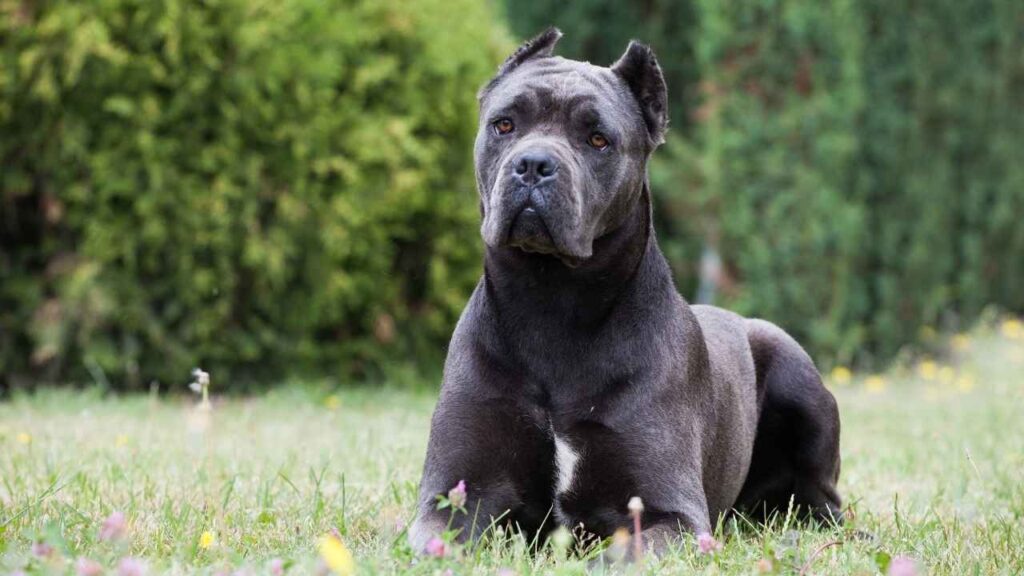
Adaptability and Level of Independence
When it comes to adaptability and independence, the Giant Schnauzer shows a relatively high level of flexibility in adjusting to different living environments and lifestyles. These dogs can thrive in both urban and rural settings as long as they receive consistent training, regular exercise, and mental stimulation.
However, their independent streak can make training a challenge, especially for first-time dog owners. While they are capable of adapting to new situations, their strong will and energetic nature may not be well-suited for homes with very young children or those unable to provide firm, structured guidance.
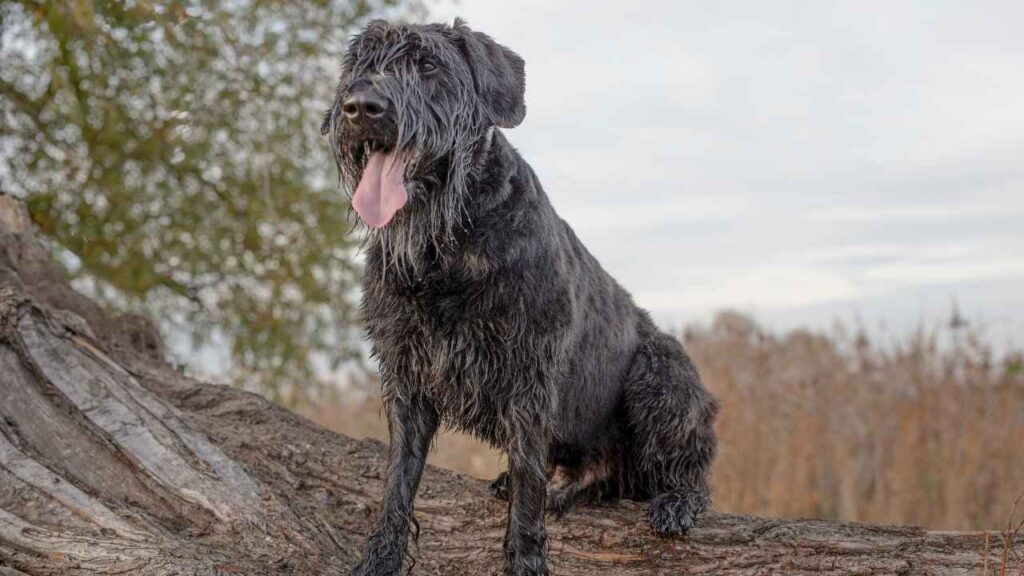
The Cane Corso is moderately adaptable but less tolerant of frequent lifestyle changes. Bred as a guardian and protector, this breed is naturally independent and often reserved, especially with strangers and other animals.
While Cane Corsos can adjust to different environments with proper training, their strong-willed and serious temperament requires experienced handlers. They are not ideal for households with small children, seniors, or multiple dogs, particularly those of the same sex. Their independence and average energy level mean they do best in stable homes with clear boundaries and consistent leadership.
Trainability and Intelligence Evaluation
Both the Giant Schnauzer and Cane Corso are highly intelligent breeds, but their training needs and responses can differ due to their temperaments. Giant Schnauzers are quick learners with strong territorial instincts, making them excellent guard dogs.
However, their intelligence is matched by their independence and high energy, which requires experienced handling and consistent structure. They excel in various dog sports and thrive when given tasks that challenge them both mentally and physically, states the AKC.
The Cane Corso is equally intelligent and known for being eager to please, making them generally responsive to training, especially when handled with positive reinforcement. While they are more serious and dominant by nature, early training and socialization are crucial in preventing them from becoming overly protective or taking control in the household. With proper guidance, a Cane Corso can be a well-mannered, loyal companion.

Energy Levels and Exercise Requirements
The Giant Schnauzer is a high-energy, active breed that needs plenty of daily physical and mental exercise to stay happy and well-behaved. Long walks, playtime, and games like fetch keep them balanced, making them ideal for active owners who enjoy outdoor activities. Without enough stimulation, they can become bored and develop behavioral issues.
The Cane Corso requires focused, purposeful exercise, needing at least a mile of brisk walking or jogging twice daily to stay healthy. Bred to work, they thrive with structured activities like obedience and protection training. Without proper mental and physical challenges, they can become restless, so they suit active families who provide consistent engagement.
Dietary Needs and Weight Management
The Giant Schnauzer needs a carefully managed diet, fed twice daily on a consistent schedule. Puppies require large-breed puppy food until at least one year to prevent joint issues. Puzzle feeders help with mental stimulation and slow eating. Portion control is essential to avoid obesity, and joint supplements like glucosamine can support mobility. Regular vet check-ups are important to adjust feeding as needed.
Cane Corsos require smaller, multiple daily meals to reduce the risk of bloat and GDV, and should avoid exercise right before or after eating. An AAFCO-approved diet suited to their life stage is key. While supplements aren’t always necessary, joint support with MSM and omega-3s can benefit long-term health. Portion control and vet guidance help maintain a healthy weight and protect their joints.
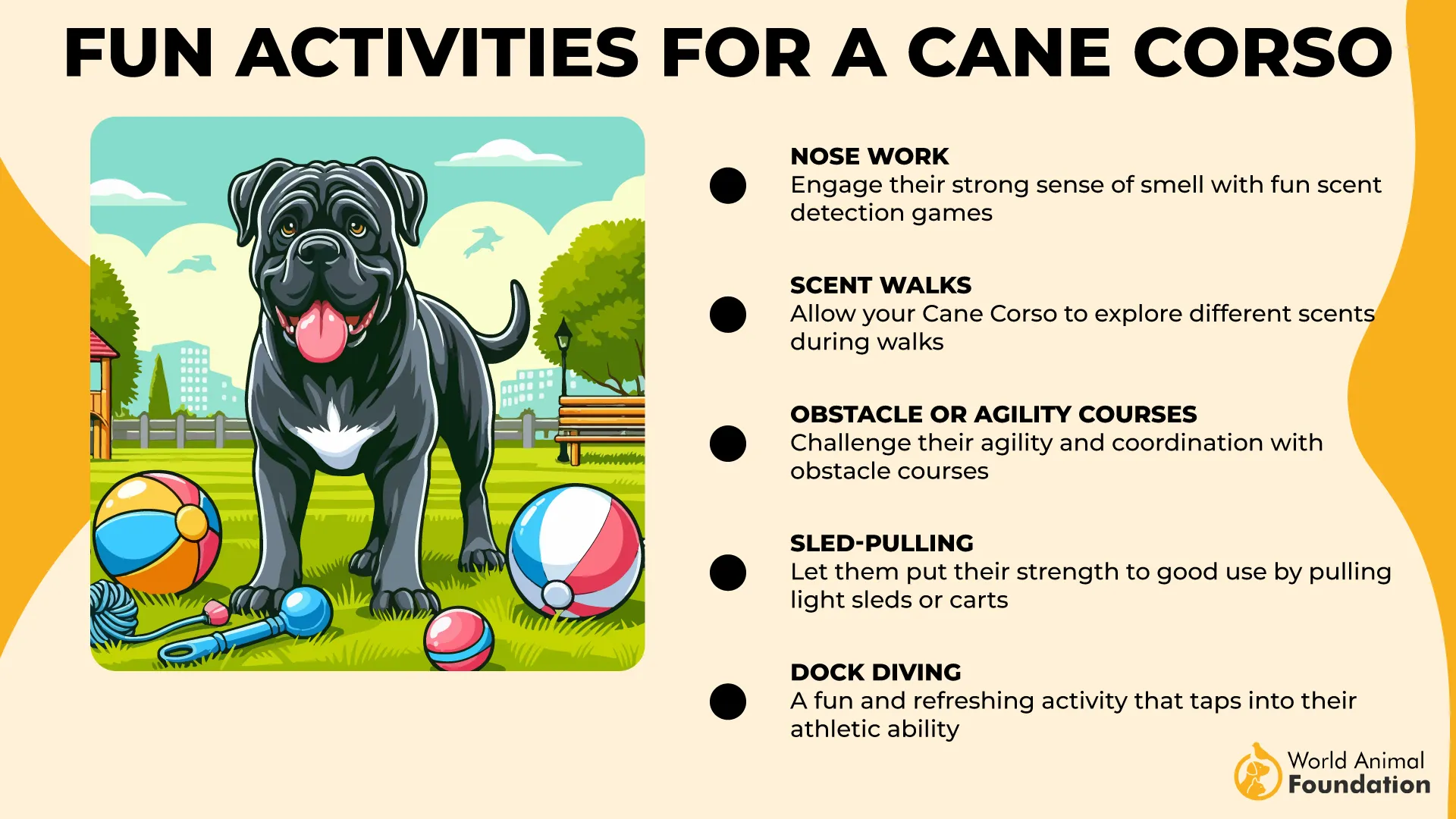
Bite Force and Jaw Characteristics
The Cane Corso, an Italian breed celebrated for its strength and agility, boasts an impressive bite force of approximately 700 PSI. This powerful jaw strength rivals that of the Kangal, one of the strongest biting dogs in the world. Despite this formidable bite force, the Cane Corso is known for its loyal and protective nature, making it an excellent family guardian when given proper training and socialization.
In contrast, the Giant Schnauzer has a strong but less intense bite force, measured at around 400 PSI. While Giant Schnauzers may nip, chew, or playbite, especially during puppyhood, these behaviors are typically non-aggressive and part of their natural herding instincts. Training is essential to help them develop a positive bite attitude, ensuring their strong jaws are controlled and not used aggressively.
Health Issues and Lifespan Expectations
Giant Schnauzers are generally healthy but prone to some common conditions, such as hip and elbow dysplasia, which affect joint function and mobility. They may also develop pan osteitis, a painful bone inflammation that usually resolves with time, and are at risk for bloat (GDV), a life-threatening stomach twisting condition requiring immediate surgery, states WebMD.
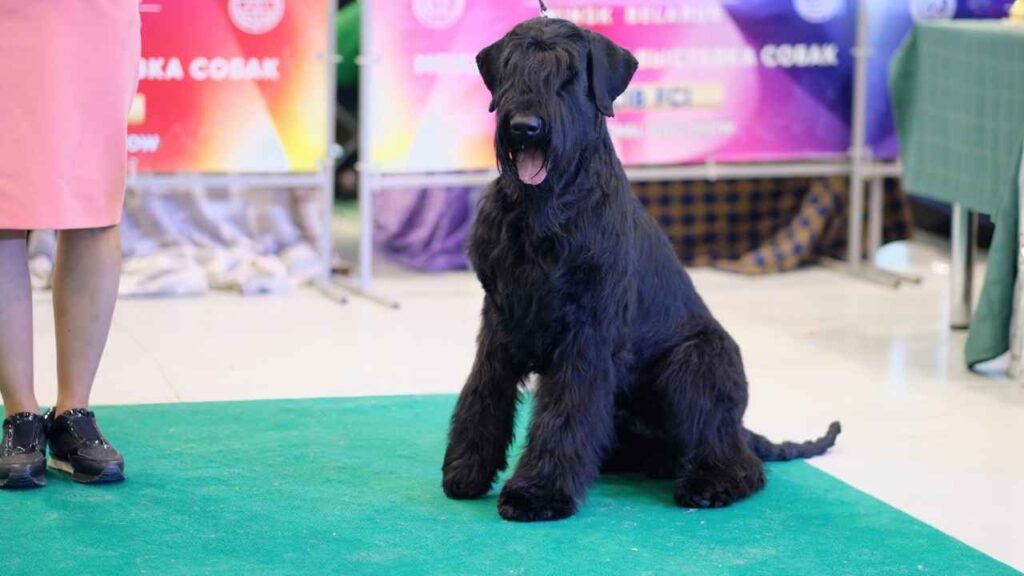
Eye issues like glaucoma, cataracts, and progressive retinal atrophy (PRA) can affect their vision, and autoimmune thyroiditis is another concern that needs regular veterinary monitoring.
Cane Corsos are also generally healthy but can face health challenges like obesity, hip and elbow dysplasia, and idiopathic epilepsy, a seizure disorder manageable with medication. Skin conditions such as demodectic mange and eyelid abnormalities like entropion, ectropion, and cherry eye are common and may require treatment or surgery, states PetMD.
Like Giant Schnauzers, Cane Corsos are susceptible to bloat and GDV, which demand urgent veterinary care. With proper care and veterinary oversight, both breeds typically have a lifespan ranging from 10 to 12 years.
Allergies and Grooming Needs
The Giant Schnauzer sports a dense, wiry double coat made up of a soft undercoat and a harsh outer layer that provides weather resistance. This coat requires regular upkeep—weekly brushing and routine clipping or stripping—to keep it healthy and looking its best.
Owners should be ready to invest time in grooming or seek professional help recommended by breeders. Additionally, regular ear checks for infection and frequent teeth brushing with dog-safe toothpaste are important parts of their care routine.
Cane Corso has a shorter, double-layered coat with an undercoat that varies by climate and sheds year-round, especially in spring. To manage shedding and maintain coat health, weekly brushing is necessary—and daily brushing during peak shedding seasons—using tools like medium-bristle brushes or rubber grooming mitts.
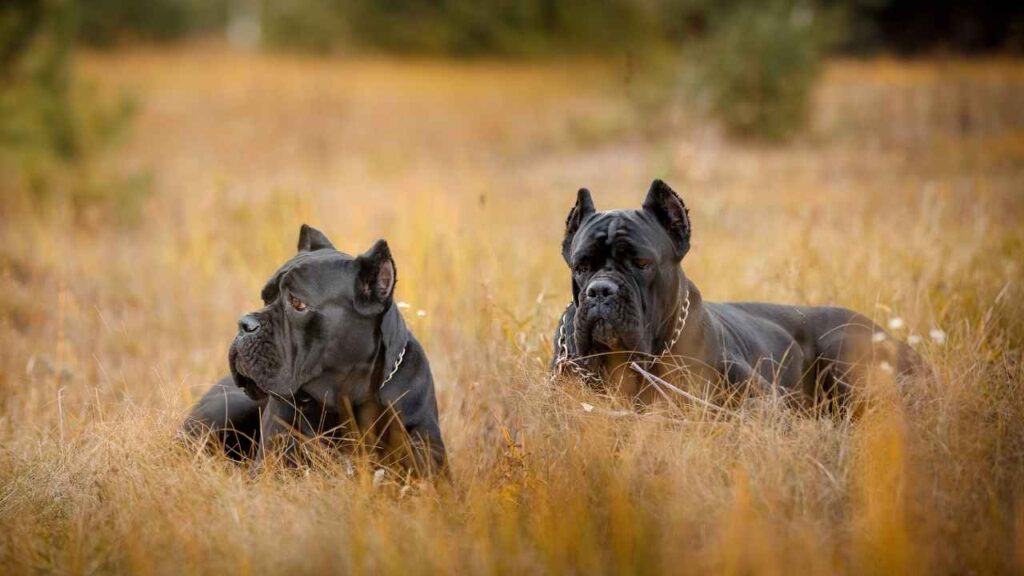
Regular nail trimming is also essential, as overly long nails can cause discomfort and affect the dog’s movement. Both breeds benefit from consistent grooming to support their overall well-being.
Conclusion
In conclusion, choosing between a Cane Corso and a Giant Schnauzer depends largely on your lifestyle and what qualities you prefer in a dog. Both breeds offer loyalty, intelligence, and strong protective instincts, but they express these traits in different ways.
If you’re someone who enjoys an active day filled with exercise and mental challenges, the energetic Giant Schnauzer might be a great fit. On the other hand, if you want a calm yet confident guardian with a strong bond with family, the Cane Corso could be the ideal choice.
For those who want to learn more before making a decision, there are plenty of ways to find reliable information—whether through detailed search results, expert videos, or connecting with experienced owners.
Taking the time to gather easy-to-understand insights will help you make the best choice for you and your future furry companion. After all, the right match means happier days for both you and your dog.


